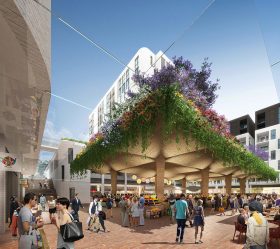Cities may power our economy, but our great challenge is to create places that aren’t just for spending money, but for spending time, says Urbis Director Princess Ventura.
In one of the world’s most multicultural nations, is it even possible to create cities that include everyone? Ventura thinks it is.
“The best cities are authentic, inclusive and flexible places that are not just for the affluent. A great city is about more than making a buck,” she explains.
Ventura, who will be heading to Cairns in October to speak at The Property Congress, spent eight years working with the World Bank, advising governments on policies to reduce poverty and promote economic growth.
At Urbis, she applies the same expertise to help clients make evidence-based decisions to design places that work, from shopping malls and business parks, to urban renewal projects and residential developments.
Australians often think world leadership is found elsewhere, Ventura says, but “there are things we do better than almost anywhere else, like delivering cities that are inclusive.”

 Article Header Image and above: Eastwood Centre Redevelopment. Developer: Yuhu Property (Australia). Architect: HDR
Article Header Image and above: Eastwood Centre Redevelopment. Developer: Yuhu Property (Australia). Architect: HDR